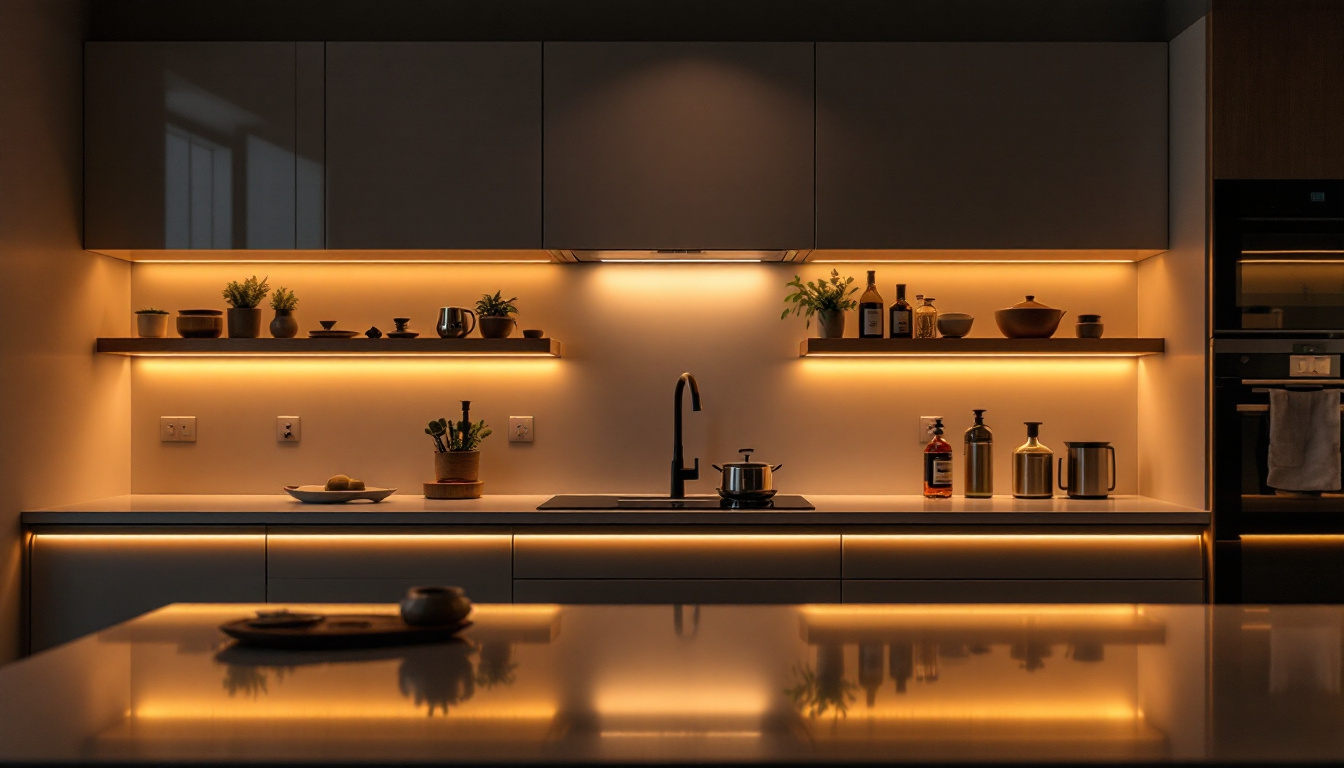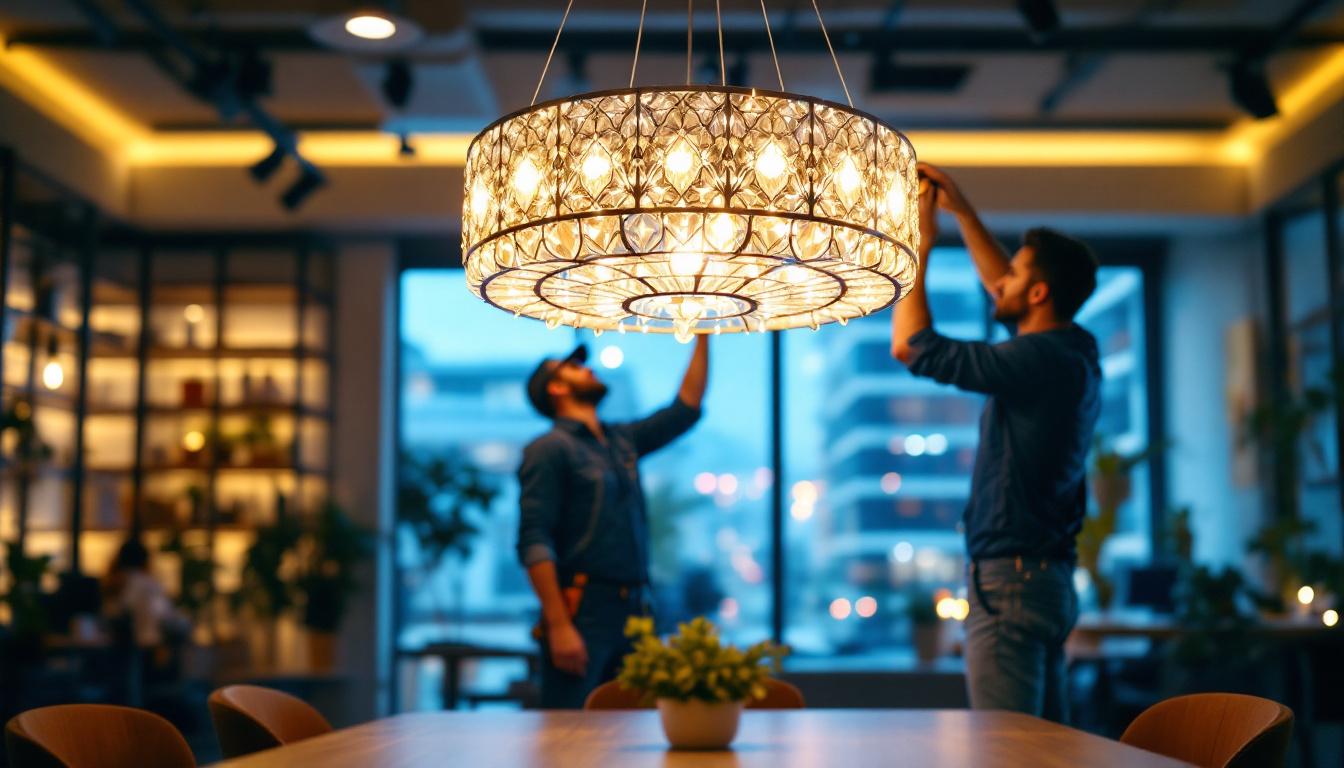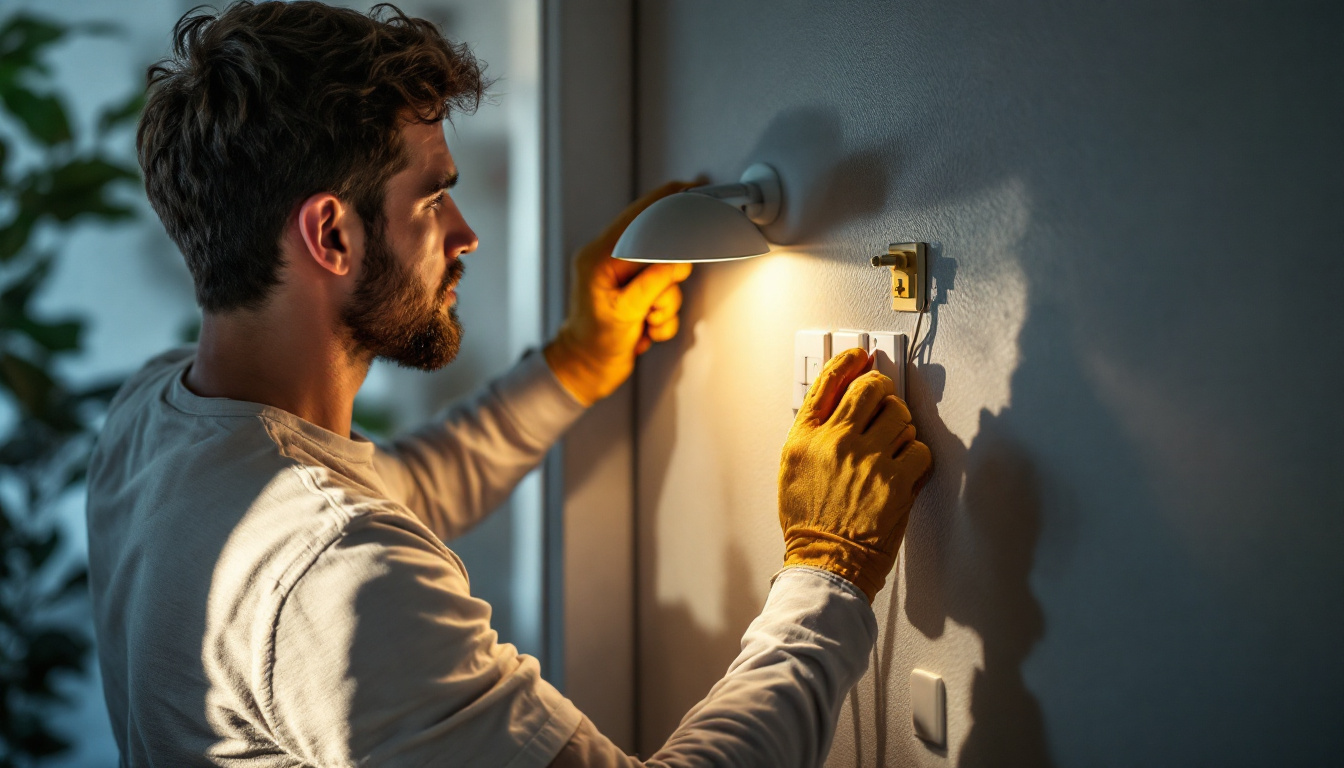
In the ever-evolving world of lighting technology, staying ahead of the curve is essential for contractors aiming to deliver the best solutions to their clients. LED fluorescent lights have emerged as a powerful alternative to traditional lighting, offering energy efficiency, longevity, and versatility. This article delves into the key considerations for lighting contractors looking to future-proof their projects with LED fluorescent technology.
LED fluorescent lights combine the benefits of LED technology with the familiar form factor of traditional fluorescent tubes. This hybrid approach allows for easy retrofitting in existing fixtures, making it an attractive option for both new installations and upgrades. The seamless integration of LED technology into the traditional lighting framework not only preserves the aesthetic appeal of existing designs but also ensures that users can enjoy the advantages of modern lighting without the need for extensive renovations.
LEDs operate differently than fluorescent lights, using a semiconductor to convert electricity into light. This process not only consumes less energy but also generates less heat, contributing to a longer lifespan and reduced cooling costs in commercial spaces. Additionally, the absence of harmful substances like mercury, which is often found in traditional fluorescent tubes, makes LED fluorescent lights a safer choice for both the environment and human health.
One of the most compelling reasons to adopt LED fluorescent lights is their energy efficiency. They consume significantly less power than traditional fluorescent lights, which can lead to substantial savings on energy bills. For contractors, this means being able to offer clients a solution that not only meets their lighting needs but also aligns with sustainability goals. The lower energy consumption of LED lights can be particularly beneficial in large facilities, where the cumulative savings can amount to thousands of dollars over time.
Moreover, many regions offer incentives for energy-efficient upgrades, further enhancing the financial appeal of LED technology. By educating clients about these benefits, contractors can position themselves as knowledgeable partners in the transition to energy-efficient lighting. Furthermore, the positive impact on a business’s carbon footprint can be a powerful selling point, as more companies seek to demonstrate their commitment to environmental responsibility in today’s eco-conscious market.
LED fluorescent lights boast a lifespan that can exceed 50,000 hours, far surpassing traditional fluorescent options. This longevity translates to lower maintenance costs and less frequent replacements, which is particularly advantageous for commercial clients who may have large-scale lighting installations. The reduced need for replacements not only saves money but also minimizes disruptions in business operations, allowing companies to maintain a consistent and professional appearance without the hassle of frequent lighting changes.
By choosing LED technology, contractors can reduce the frequency of service calls and enhance customer satisfaction. Clients appreciate the reduced hassle of maintenance, which can be a significant selling point when discussing project options. Additionally, the durability of LED lights means they are less susceptible to breakage and damage, making them ideal for high-traffic areas or environments where traditional bulbs might fail more often. This reliability fosters a sense of trust between contractors and clients, as businesses can depend on their lighting systems to perform consistently over time, contributing to overall operational efficiency.
LED fluorescent lights are available in a variety of styles, color temperatures, and brightness levels, allowing for greater design flexibility. This adaptability makes it easier for contractors to meet the specific needs of different spaces, from offices to retail environments.
Furthermore, the aesthetic appeal of LED lights can enhance the overall ambiance of a space. With options ranging from warm white to cool daylight, contractors can create tailored lighting schemes that complement the design and function of any area.
The Color Rendering Index (CRI) is a critical factor in lighting design, as it measures how accurately a light source displays colors compared to natural light. LED fluorescent lights typically offer a higher CRI than traditional fluorescent options, which can be particularly important in settings such as art galleries, retail stores, and showrooms.
By selecting LED lights with a high CRI, contractors can ensure that colors appear vibrant and true-to-life, enhancing the customer experience and potentially boosting sales in retail environments.
As the demand for smart technology in homes and businesses continues to grow, integrating LED fluorescent lights with smart systems can set contractors apart from the competition. Smart lighting solutions allow for remote control, scheduling, and automation, providing clients with convenience and energy savings.
Contractors who stay informed about the latest smart lighting technologies can offer clients comprehensive solutions that enhance functionality and efficiency. This forward-thinking approach not only meets current demands but also prepares clients for future advancements in lighting technology.
Staying compliant with local and national lighting standards is crucial for contractors. LED fluorescent lights typically meet or exceed energy efficiency regulations, but it’s essential to stay updated on any changes in compliance requirements. This diligence not only protects contractors from potential liabilities but also reassures clients that they are making a responsible choice.
Moreover, understanding the certifications associated with LED products, such as Energy Star or DLC (DesignLights Consortium), can help contractors recommend high-quality products that align with client expectations and regulatory standards.
As sustainability becomes a central concern for many businesses, contractors should highlight the environmental benefits of LED technology. Unlike traditional fluorescent lights, which contain hazardous materials like mercury, LED fluorescent lights are free from such substances, making them a safer choice for both users and the environment.
By promoting the eco-friendly aspects of LED lighting, contractors can appeal to environmentally conscious clients and contribute to a more sustainable future. This can be a significant differentiator in a competitive market.
While the upfront cost of LED fluorescent lights may be higher than traditional options, the long-term savings on energy and maintenance can result in a favorable return on investment (ROI). Contractors should provide clients with a clear breakdown of potential savings over time, helping them understand the financial benefits of making the switch.
Additionally, contractors can explore financing options or rebates available for energy-efficient upgrades, making it easier for clients to justify the initial investment. This proactive approach can lead to increased sales and stronger client relationships.
Conducting a life cycle cost analysis (LCCA) can be an invaluable tool for contractors when discussing lighting options with clients. This analysis takes into account not only the initial purchase price but also the costs associated with energy consumption, maintenance, and disposal over the lifespan of the lighting system.
By presenting a comprehensive LCCA, contractors can effectively communicate the long-term financial advantages of LED fluorescent lights, helping clients make informed decisions that align with their budget and sustainability goals.
Proper installation is critical to maximizing the performance and longevity of LED fluorescent lights. Contractors should follow best practices to ensure that installations are completed efficiently and effectively. This includes understanding the specific requirements for different fixtures and ensuring that all electrical connections are secure.
Additionally, educating clients on the importance of using compatible dimmers and controls can enhance the functionality of LED lighting systems. By providing comprehensive installation services, contractors can build trust and establish a reputation for quality workmanship.
As technology continues to advance, ongoing training and certification for contractors are essential. Staying informed about the latest developments in LED technology, installation techniques, and compliance standards can help contractors maintain their competitive edge.
Participating in workshops, webinars, and industry conferences can provide valuable insights and networking opportunities. By investing in education, contractors can position themselves as experts in LED lighting solutions, instilling confidence in clients and fostering long-term relationships.
Highlighting successful projects can be a powerful way for contractors to showcase their expertise and the benefits of LED fluorescent lights. Case studies can demonstrate the transformative impact of LED technology in various settings, from commercial offices to industrial facilities.
By sharing real-world examples of energy savings, improved aesthetics, and enhanced functionality, contractors can provide tangible evidence of the advantages of LED lighting. This can be particularly persuasive when engaging potential clients who may be hesitant to make the switch.
In addition to case studies, gathering client testimonials can further enhance a contractor’s credibility. Positive feedback from satisfied clients can serve as powerful marketing tools, helping to build trust with prospective customers. Encouraging clients to share their experiences can create a sense of community and foster loyalty.
Contractors should consider utilizing social media and online platforms to showcase these testimonials, reaching a broader audience and reinforcing their reputation as industry leaders in LED lighting solutions.
As the lighting industry continues to evolve, embracing LED fluorescent technology is essential for contractors seeking to future-proof their projects. By understanding the benefits of energy efficiency, longevity, design flexibility, and compliance, contractors can position themselves as trusted advisors in the transition to modern lighting solutions.
By staying informed about the latest advancements, investing in training, and showcasing successful projects, contractors can build a strong foundation for their businesses. The future of lighting is bright, and those who adapt to these changes will undoubtedly thrive in an increasingly competitive market.
Ready to elevate your lighting projects with the efficiency and longevity of LED fluorescent technology? At LumenWholesale, we provide contractors with the highest quality, spec-grade lighting products at unbeatable wholesale prices. Say goodbye to inflated markups and hello to a vast selection of reliable, high-performance lighting that meets the highest industry standards. With free shipping on bulk orders, you can secure premium lighting solutions at the best value — all without hidden fees or compromises. Don’t miss out on the perfect blend of quality, affordability, and convenience. Explore our Wholesale Lighting at the Best Value today and future-proof your lighting projects with LumenWholesale.

Discover the latest trends in undercabinet LED lighting that every lighting contractor needs to know.

Discover effective strategies for training your team in utilizing motion-activated security lights to enhance safety and efficiency.

Discover how pendant chandelier lighting is revolutionizing the lighting industry, offering contractors innovative solutions for design and functionality.

Explore the essential guide for lighting contractors on electrical switches, covering types, installation tips, safety considerations, and the latest innovations to enhance your projects and ensure efficient lighting solutions..